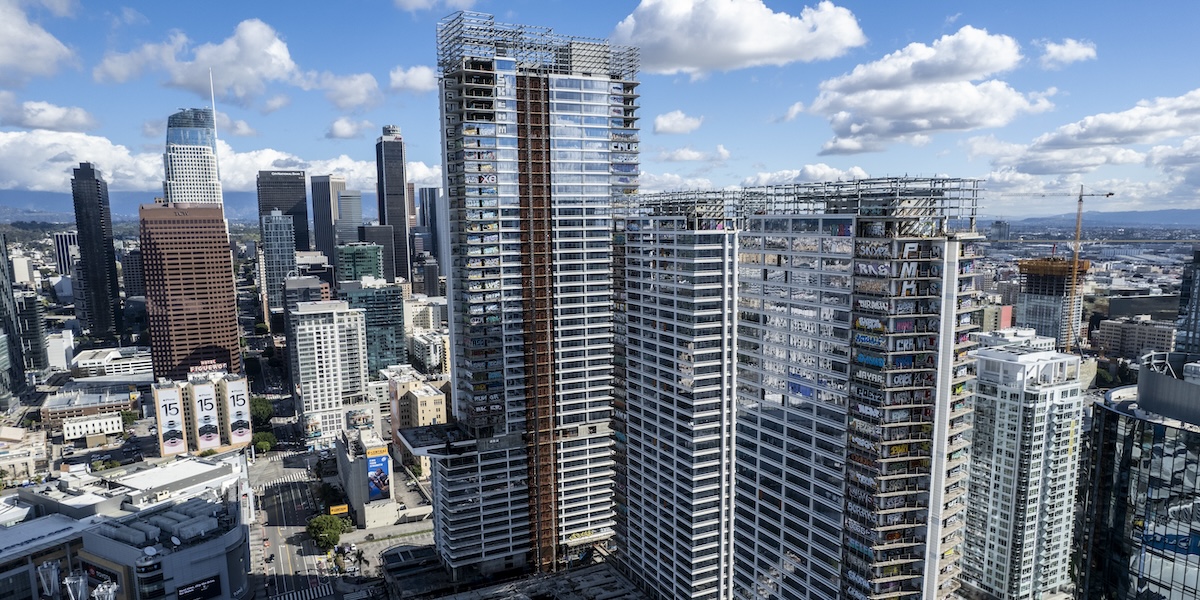Loading player
Between the end of January and the beginning of February, some people climbed over the fences of an abandoned complex in the center of Los Angeles and painted graffiti and “tags” on the facades of its three unfinished skyscrapers, the typical stylized signatures which, according to the most critical opinions on street art they have little that is artistic. The images of the graffitied skyscrapers attracted molta Attentionnot only because they are in front of the arena where the Grammy awards were held last Sunday, i.e. the main awards of the US recording industry, but also because according to Forbes those were to become the residential skyscrapers taller of the city.
The skyscrapers are part of a billion-dollar complex called Oceanwide Plaza, which was supposed to house shops, hotels and luxury apartments. It was one of the largest projects in the Downtown neighborhood, but it was blocked when the Chinese company that was building it declared bankruptcy.
According to the US press, there were at least ten street artists who made their writings over the course of three nights, climbing more than 25 floors on foot, albeit in precarious safety conditions. Their action provoked the protests of some residents of the area: on Wednesday the Los Angeles police, who had immediately promised to intervene, said they had arrested four people, currently under investigation for “numerous crimes”.
Behind the graffiti on the skyscrapers of Los Angeles there is not a homogeneous artistic movement, but rather an initiative of spontaneous participation, which Pitzer College professor Susan Phillips, an expert on urban art, called “perhaps the most legendary in the history of Los Angeles.” For Stefano Bloch, who teaches cultural geography at the University of Arizona, the operation of these street artists is “a powerful comment” on who has the right to exploit spaces in cities. Speaking with the New York TimesBloch said that these are “people taking responsibility for using a space that in many ways had been abandoned by other people with money and power.”
– Read also: The Molise that resists
